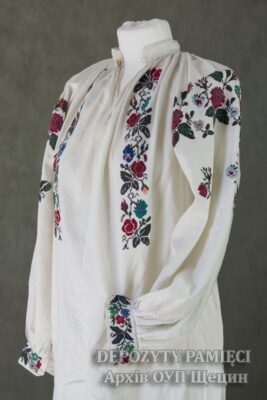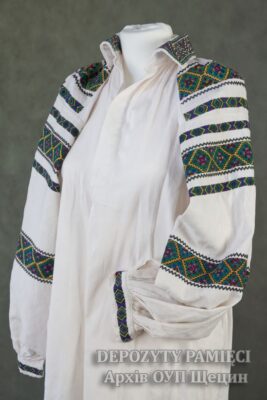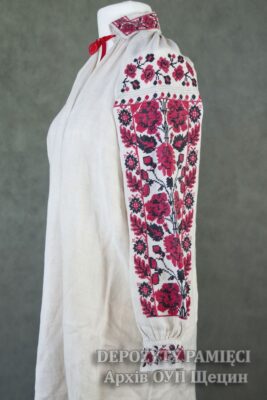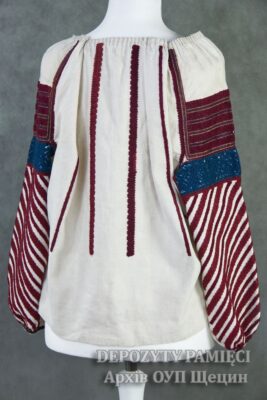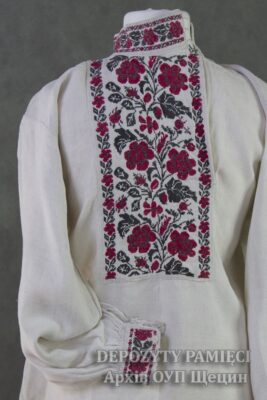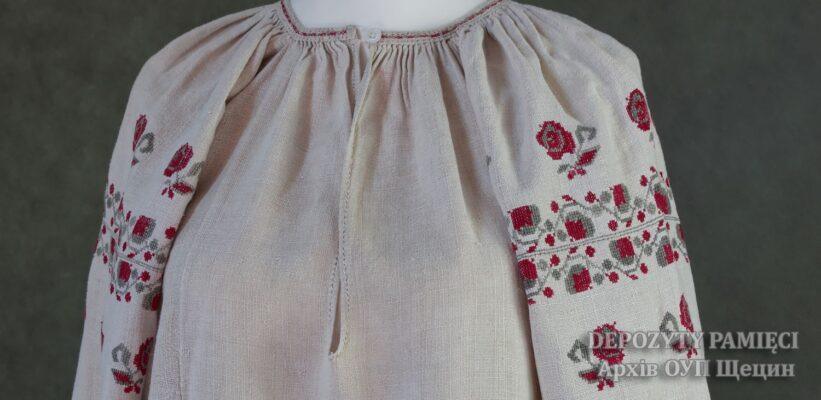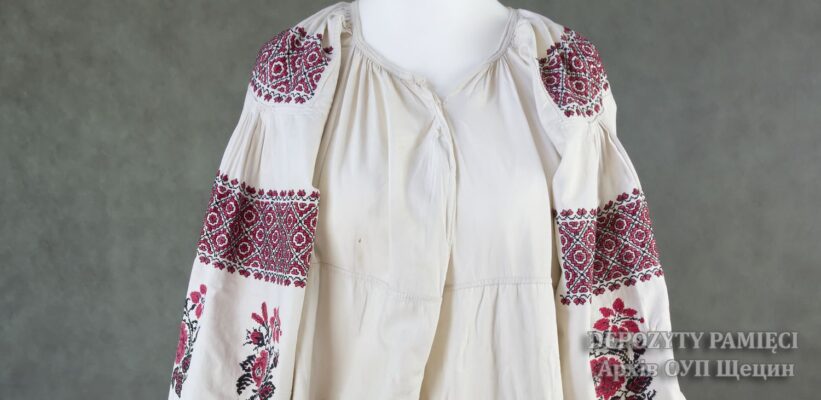The great wealth of Ukraine (unique in comparison to other European countries) is its regional diversity. There are significant language differences (dialects, jargons), culinary and religious ones and many others, which manifest themselves in architecture, housing (also traditional), music, art and folk craft across the country’s regions.
This richness is exceptionally visible in costumes and articles of everyday use (household appliances, dishes, furniture). This diversification is a result of a number of factors such as geographical differences (landscape differences, climate, specific type of vegetation of particular regions), demographic (except for predominant, excluding Crimea, Ukrainian community, which inhabits practically every region of Ukraine, where a few or more other nationals groups exist, with their own language, culture and traditions), political (the area of contemporary Ukraine belonged during the last millennium to several government systems, with their cultural centers, affecting lands inhabited by Ukrainians), economic (prevalent types of occupational trades in a given area, as well as the type of local natural resources). All of this contributed to diversity of Ukrainian culture of daily life, creating a unique amalgamation of spiritual values, as well as artifact making techniques. Changing influences of the East and West, unique for every region and specific only to a given area resulted in different types of clothing in Transcarpathia, in comparison the Trans Dniester region, with a distinct style of head cover decoration in Volhynia region and in steppe Ukraine; and about the specificity of women’s decoration in Polesie and Bukovina regions.
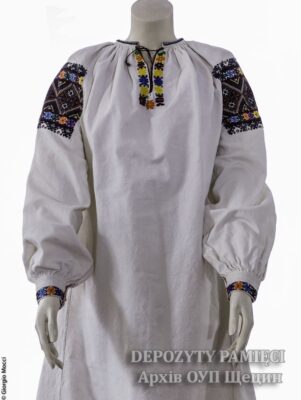
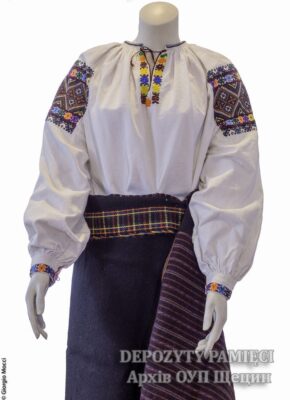

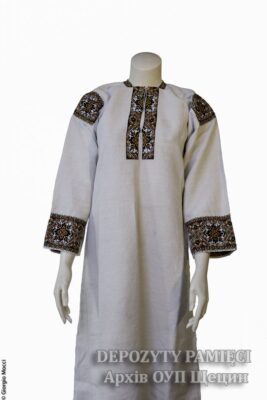

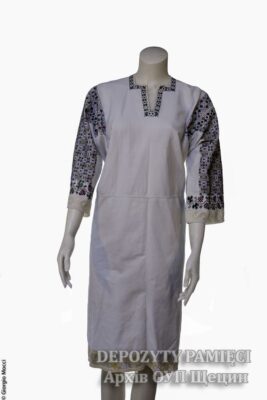

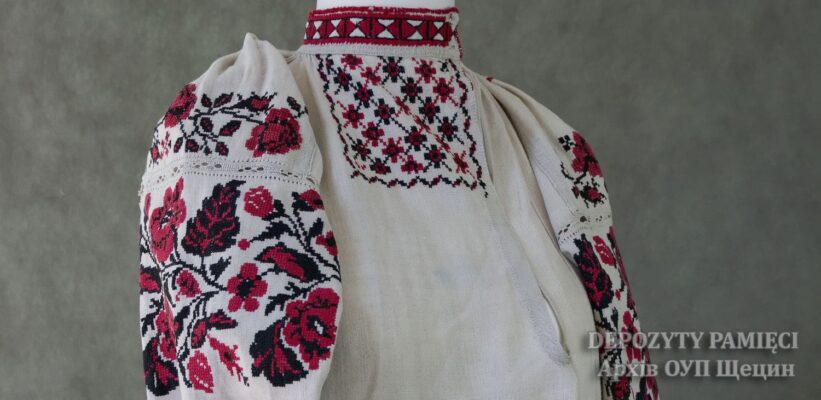
From the very beginning of the existence of material culture, clothing is one of the items present in human existence- it is used to regulate temperature and body moisture in its surroundings and climate, as well as to protect from wild animals. The primary clothing decoration were the results of additional functions fulfilled by clothes ( eg. protective), or in order to reinforce the fabric or the whole outfit (eg. additional stitches, piping, lampasas, sewn on elements or embroidery or sewn in metal rods). With time every day outfits would go through the process of aestheticization- they started to be decorated for pleasure (function), giving it an additional sacral and magic meaning (shamans, mags and priests wore special attire, which would distinguish them form the rest, however the secular attire could also have magic elements, such as amulets and symbolic decorations, providing the wearers with prosperity and protecting them from misfortunes).
The distinctive pieces of daily and festive attire were in particular shirts (blouses), as one of the most visible and characteristic elements of attire, both for men and for women. In Wolynia region female blouses (in reality shirts, longer than regular blouses) had a split in the middle (in men’s shirts sometimes the split was located on the left side), were decorated with embroidery in geometric or floral patterns, embroidered in black, red or white colours.; in the Western part of the region from the beginning of the XX century collars, sleeves and wide cuffs started to be embroidered in black color, followed by a number of used colors, which amounted to over twenty.

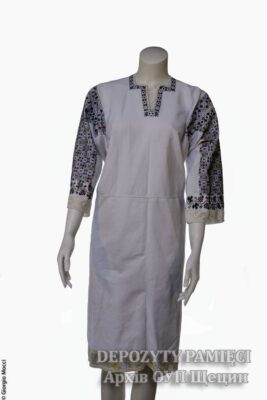
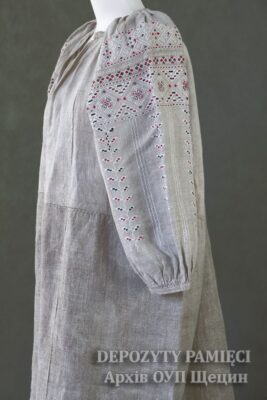

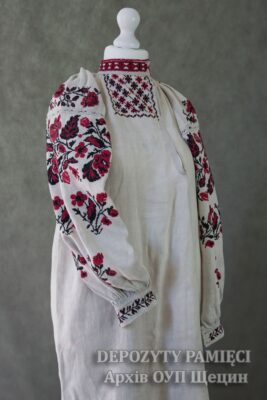
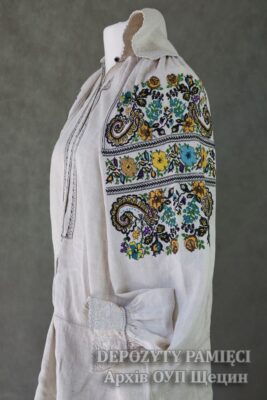
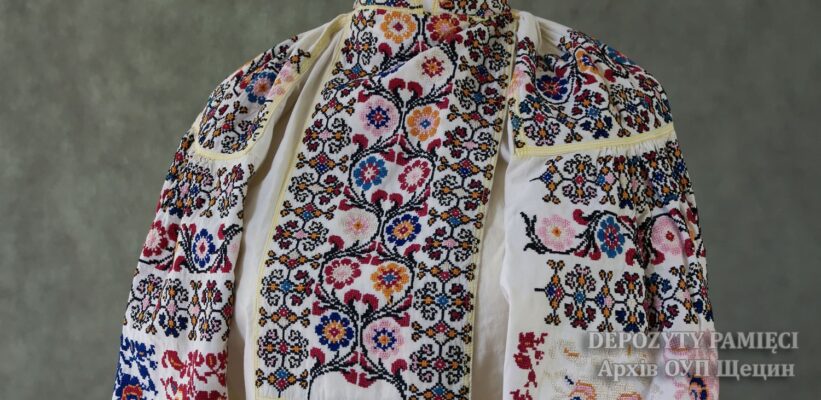
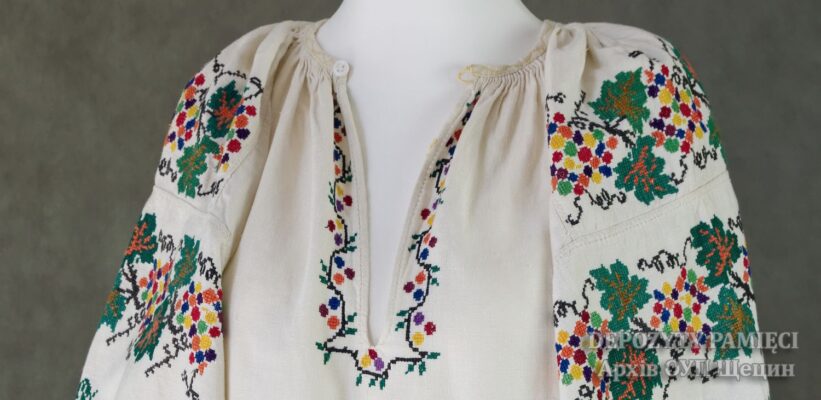
In Podolia a widely used material was linen or hemp cloth. Thanks to fertile soil (mollisol!) a high quality hemp could be grown, which resulted in good quality cloth fabric. After WWI, (with long presence of the front line and military action) in Podolia military baize was used. The cut types of female shirts were consistent with Ukrainian tradition. In Eastern Podolia the preferred decor of shirts consisted of two colors (red and black), embroidered in complicated geometric forms (rhombuses, rosettes, rhombus shapes with horns).
In Dnipro region (Central Ukraine) initially geometric ornaments were embroidered in red, and blue or red and black in satin stitch, later on the cross stitch was used. At the beginning of XX century a grape pattern in cross stitch was particularly popular, most often in black and white colors, sometimes with the addition of yellow.
In Eastern Galicia, women whose family members passed away, wore mourning blouses embroidered in blue, violet or black. In the area of Gródek Jagielloński a special method of embroidery was used called “gródecki” stitch. In the region of Mikołajów (south of Lviv) it was characteristic to place an embroidered stripe in the lower part of a sleeve, close to the cuff.
